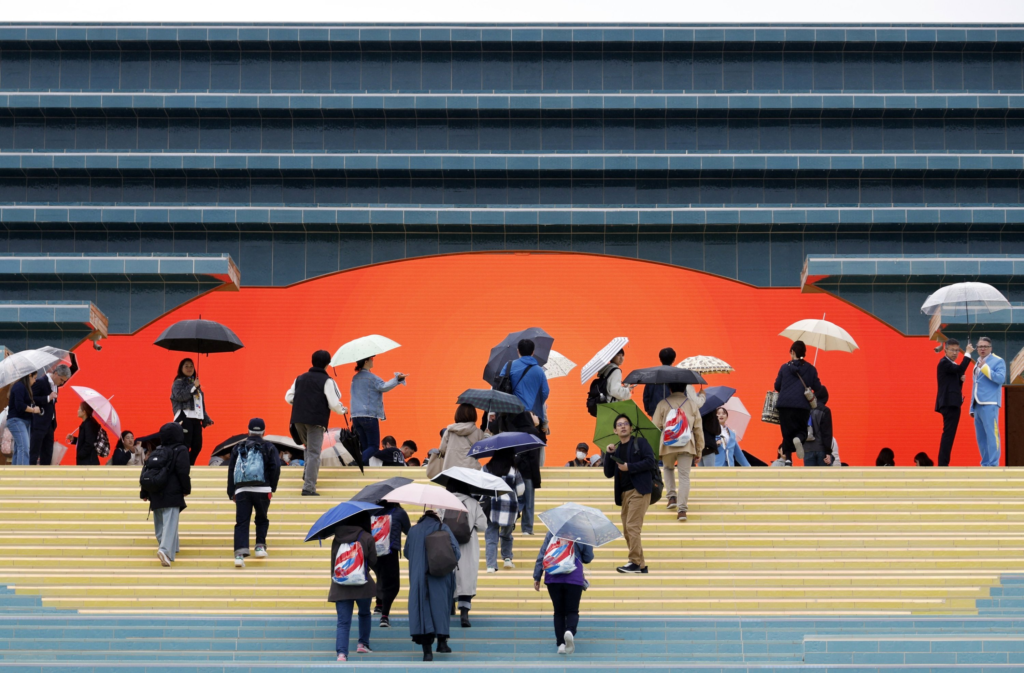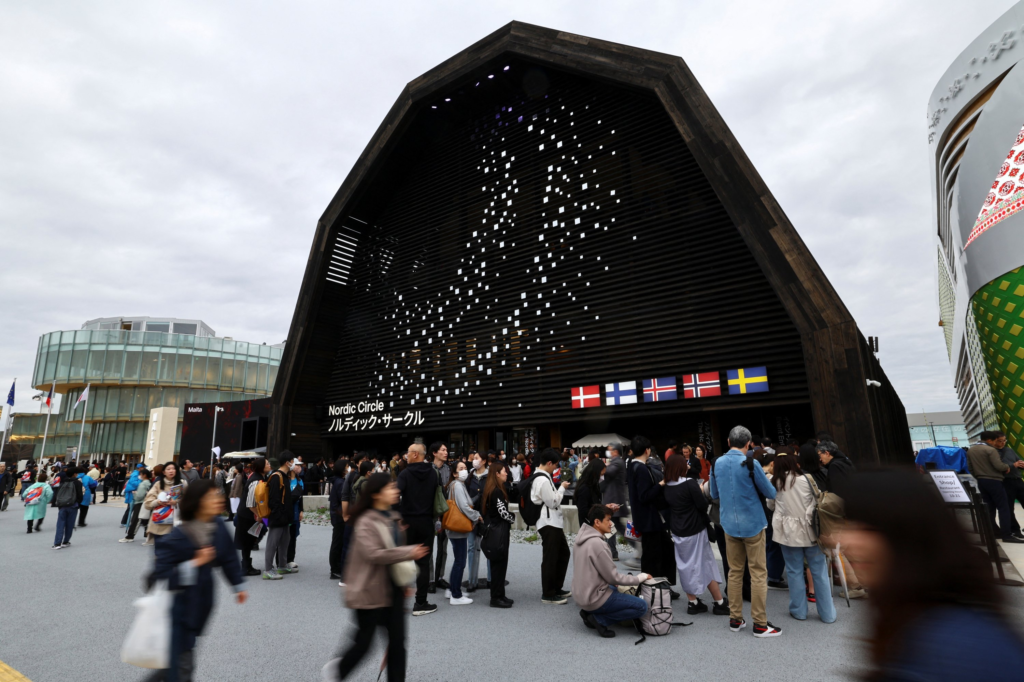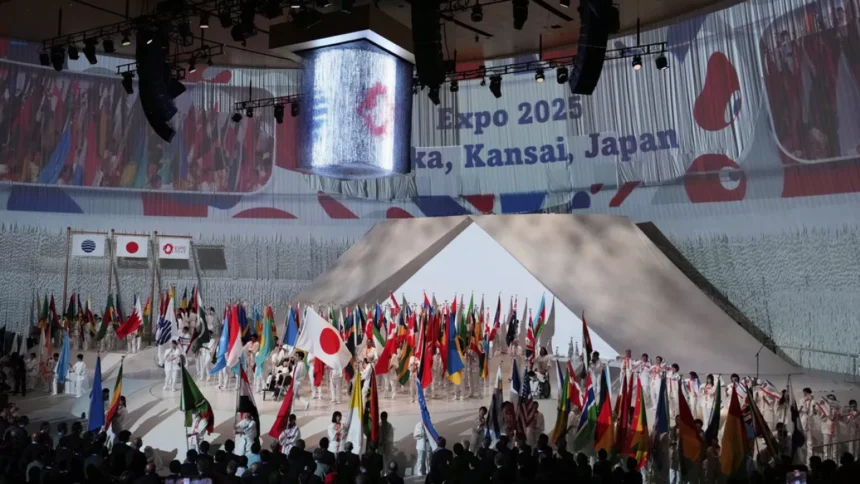A Grand Opening with Beethoven and 10,000 Voices

The Expo 2025 officially opened in Osaka, Japan, on Sunday, drawing over 10,000 people who united in singing Beethoven’s Ninth Symphony. The performance marked the beginning of the six-month international exposition, which organizers hope will foster global unity in an era marked by wars and geopolitical tension.
Location and Theme: From Industrial Waste to ‘Dream Island’
The Expo is being held on Yumeshima—meaning “Dream Island”—a reclaimed landfill site in Osaka Bay. The theme, “Creating a Future Society for Our Lives,” centers on showcasing innovations in sustainability, technology, and culture.
More than 160 countries, regions, and organizations are participating, each housed within one of the event’s approximately 80 architecturally distinct pavilions.
A Second Chance After 55 Years

This is Osaka’s second Expo, the first being the historic 1970 World Expo, which drew 64 million visitors—a record until Shanghai 2010. Organizers now aim for 28 million visitors by the event’s close in mid-October 2025.
So far, around 9 million tickets have been sold in advance, falling short of the initial 14 million ticket target.
Visitors Celebrate the Mascot and a Message of Hope

Visitors came from across Japan and the globe, many dressed in red, blue, and white to match the colors of Myaku-Myaku, the Expo’s quirky and symbolic mascot. Daiki Chiba, a visitor from Sendai, traveled 900 kilometers to attend, expressing excitement over the long-awaited event.
A Global Event Amid World Crises

The Expo comes at a sensitive time. Just four years ago, Japan hosted the Tokyo Olympics without spectators due to the COVID-19 pandemic. Now, Expo 2025 opens against a backdrop of:
- Ongoing wars, including the Russia–Ukraine conflict.
- Middle East tensions.
- A global economic chill caused by U.S. President Donald Trump’s tariffs, including a damaging 25% duty on automobiles, seen as a blow to Japan’s export-driven industries.
Japanese Prime Minister Shigeru Ishiba compared the situation to a “national crisis,” but Expo organizers remain hopeful.
“Holding the Expo now could eventually help to address the divisions in the world,” said Sachiko Yoshimura, Head of Global Communications for Expo 2025.
The Architectural Centerpiece: World’s Largest Wooden Structure
The event’s centerpiece is a massive architectural feature designed by Sou Fujimoto—a lattice-like wooden ring, 20 meters tall and stretching 2 kilometers in circumference. This Guinness World Record-holding structure accounts for 14% of the Expo’s total budget of ¥235 billion (US$1.64 billion) and has faced criticism over rising costs and delays.
Despite cost overruns due to a weaker yen, the ring is partially reusable, reinforcing the Expo’s commitment to sustainability.
Delayed Pavilions but Dazzling Tech Highlights

Construction delays mean some pavilions—those of Nepal, India, Vietnam, and Chile—were not ready for the opening. However, the Expo still offers dazzling attractions, including:
- Flying cars and robots
- Pop culture exhibits featuring Hello Kitty and Gundam
- A Japanese healthcare pavilion with a miniature artificial heart made from induced pluripotent stem (iPS) cells
- A Future of Life pavilion allowing interactions with humanoid robots
- A modernized version of the “human washing machine” first shown in 1970
Focus on Space: The U.S. and China’s Interstellar Showcases
The U.S. Pavilion is themed around space exploration, showcasing a moon rock from the Apollo 12 mission, a crowd favorite from the 1970 Expo.
China’s Pavilion also emphasizes space innovation, displaying lunar soil samples from its missions.
Myaku-Myaku: The Friendly Face of Expo 2025
The official mascot, Myaku-Myaku, is a mysterious yet endearing character with a blue face surrounded by red spheres—some of which are eyeballs. Organizers say Myaku-Myaku was born from the fusion of cells and water in Kansai’s natural springs. It can transform shapes and is known for finding rainbows after the rain, symbolizing hope and transformation.









